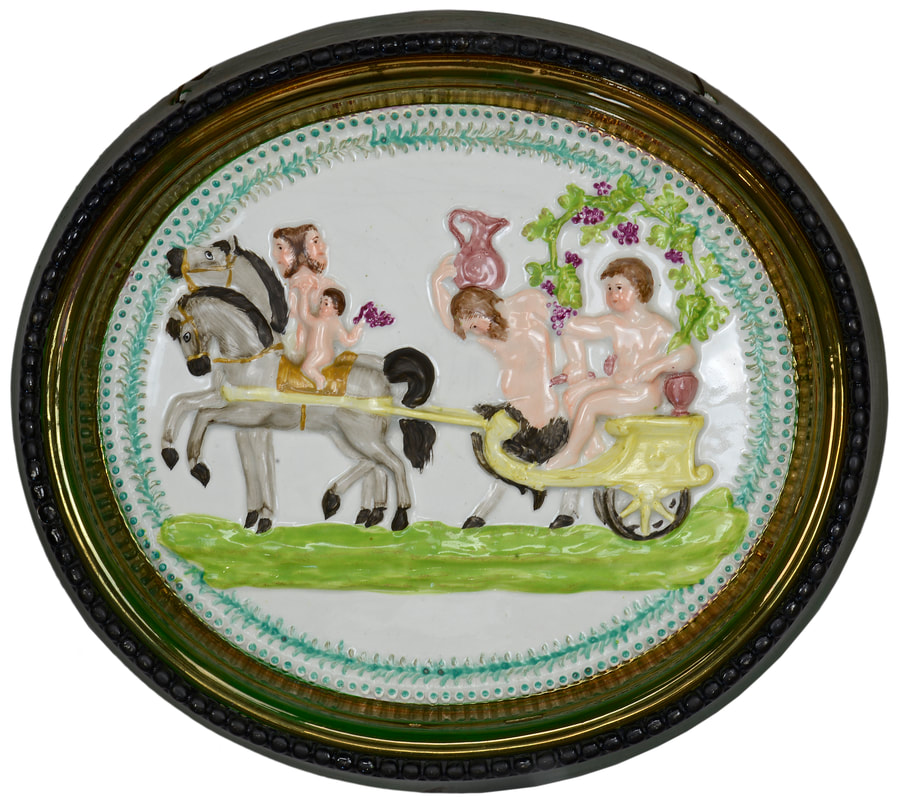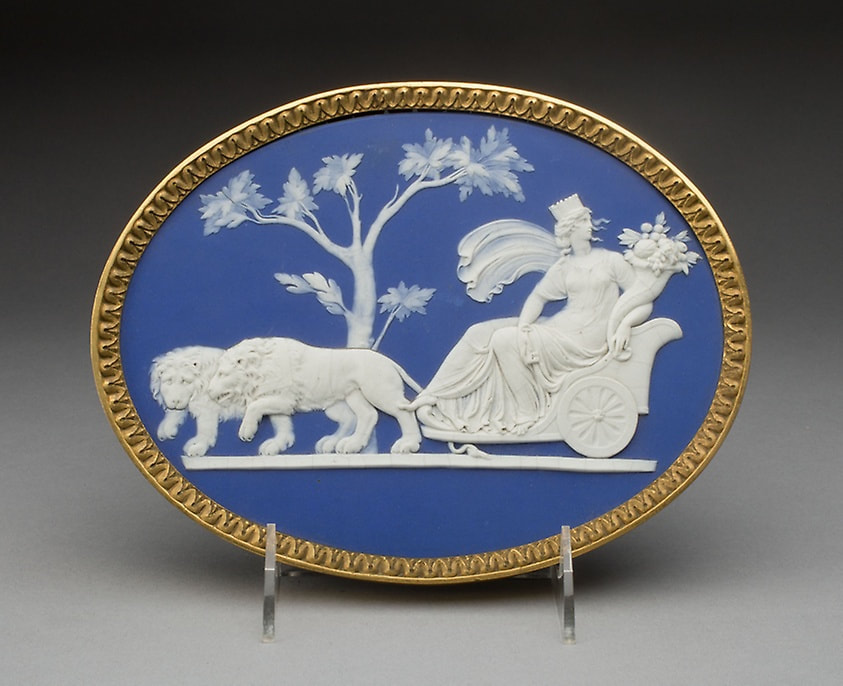To unravel the mystery, I started with the putto on horseback. He holds a two-faced mask, one face looking forward and the other back. This represents Janus, the god of beginnings and endings----yes, the very person for whom the month of January is appropriately named.
But I was on the wrong track. I should have instead looked first at the youth sitting beneath a grapevine. This, it turned out, is is the Roman god Bacchus, the god of wine, who was known to the Greeks as Dionysus. He was associated with fertility, ritual madness, and religious ecstasy. Dionysus/Bacchus is said to have returned to Greece triumphantly from his travels in India and the East, where he had spread his wine culture. He came to be considered the founder of the triumphal procession, and the Triumph of Bacchus has been depicted in art from ancient times.
The Hackwood plaque, below, shows Bacchus seated in a horse-drawn chariot with his older companion and tutor, the satyr Silenus at his side. A putto astride one of the horses carries a two-faced mask symbolic of Janus, whose presence would have marked the end of a journey and a new start. An identical motif is on a rectangular Wedgwood plaque in the Wedgwood Museum (no. 5139) that Wedgwood made at around the same time as the British Museum’s medallion.
Unfortunately, Hackwood's Triumph of Cybele, shown below, is not the design source for the pearlware plaque on that theme, so my search for this continues.

























